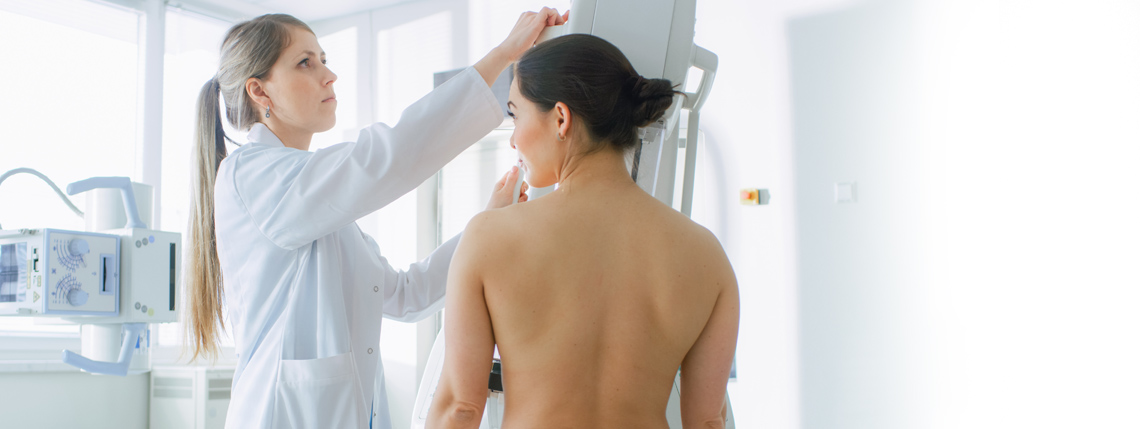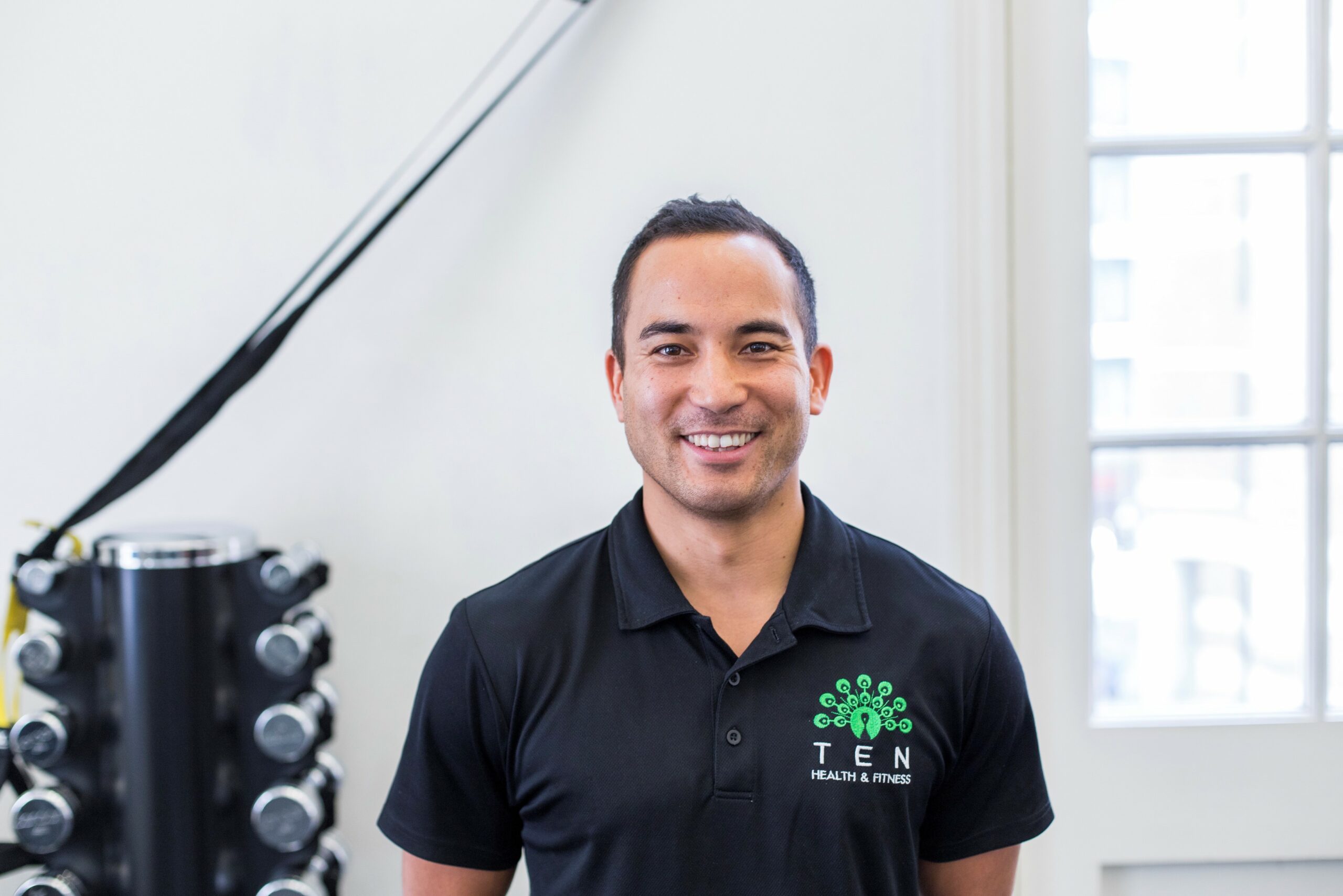How can you support a client with breast cancer? FitPro speaks to Adam Hewitt, clinical lead at Ten Health & Fitness, and Sarah El-Hawary, founder of Go Figure! Personal Training, to find out more.
According to the charity Breast Cancer Now1, exercise has many benefits for people who have had treatment. This could include reducing fatigue and helping to regain a sense of control.
Considerations
There are many considerations that need to be understood before training a client with breast cancer. Clinical lead at Ten Health & Fitness, Adam Hewitt, says, “Some of the key questions you should be asking your client are: 1) What stage is the cancer and has it spread to other areas; 2) What treatment is being prescribed and what are the possible side effects; 3) Have they had surgery to treat breast cancer and, if yes, what type of surgery – breast-conserving, lumpectomy, or mastectomy?”
Hewitt adds, “These questions will lead to what appropriate modifications are best for the patient in order to exercise safely. Fatigue, limited range of movement, and pain/scarring are all common symptoms to consider.”
So, what do these considerations look like in practice?
- Gradually increase (after surgery) any limitations in shoulder range of motion
- Gradually regain and improve movement in arms and shoulders
- Reduce pain/tension in chest wall, shoulders, neck and back
- Return to daily activities faster, such as dressing, bathing and driving
Personal trainers must quantify the range of movement through joints. Hewitt explains, “For example, a client’s shoulder range. PTs should carefully work with the client to ensure that the comfort is managed, and place concentration on reducing arm lever length (arm in this instance) via bent arm at the elbow. Theraband work is a good method to ensure that resistance is kept to a manageable level and best suited for any joint pain the client may be feeling.”
Tailored programming
Almost two-thirds2 of women diagnosed with breast cancer survive the disease beyond 20 years. Breast cancer is often thought of as something that only affects women, but in rare cases, men can get it too. It develops in the small amount of breast tissue men have behind their nipples. It usually occurs in men over 60, but can very occasionally affect younger men. Every year, around 350 men3 are diagnosed with breast cancer. Read Bryan’s story here
The Pink Ribbon Rehab Programme, which is delivered by personal trainer Sarah El-Hawary, is often the first step a client takes in returning to their life, pre-cancer. “The programme begins to work on improving flexibility, range of movement, and strength of the chest, back and shoulders. The benefits of exercising post-treatment and surgery not only aids recovery of the affected area, but also improves treatment side effects and helps clients to regain confidence.”
El-Hawary echoes Hewitt’s advice on the importance of understanding a client’s treatment plan. This helps to alert PTs to the possible long-term side effects that need to be considered in exercise prescription.
“One of my clients, Sally, was diagnosed with stage 2 breast cancer that had spread to her lymph nodes. She received eight rounds of chemotherapy prior to surgery for a mastectomy with auxiliary clearance. This was followed by four weeks of radiotherapy, five days a week. Some of the side effects experienced were extreme fatigue, reduced range of movement, loss of hair, lympoedema and peripheral neuropathy.”
“Sally was fearful of what exercises she could safely do to help with her side effects. There were days when she felt so fatigued that the exercises prescribed needed to be gentle enough to encourage her to do them, but also effective to help improve range of movement. Prescribing the right modifications for Sally allowed her to work within her own comfort levels and realise the benefits of her efforts.”
El-Hawary explains that an in-depth assessment not only allows you, as the trainer, to gather information about your client, but it also presents an opportunity for the client’s fears and needs to be heard. “The pre-assessment is the first step for clients to gain confidence in your ability to keep them safe. It also encourages the client to push through movements they may have been avoiding,” says El-Hawary.
Many women report feeling very alone in their treatment journey. The Pink Ribbon Rehab Programme provides the opportunity to be in a room with a group of women who are experiencing something similar. “I encourage weekly class feedback from clients on how they are progressing, and I provide emotional support and motivation for all members. Keeping the class size small and choosing an intimate venue helps to create a safe environment,” adds El-Hawary.
El-Hawary has also developed simple steps to help support her client’s emotional needs. Creating an online chat group has allowed for weekly check-ins and El-Hawary shares short exercise videos for homework. “Many clients suffer from ‘chemo-brain’, therefore visual prompts of weekly exercises work well. Setting up a weekly coffee morning for clients also helps to provide additional support. Group members can also continue this once the rehabilitation course has finished,” says El-Hawary.
Sarah El-Hawary’s three exercises with modifications
1) Dynamic mobility
Pendulum Arms in standing:
- Standing in a slight squat, let one arm hang loosely down to the floor
- Let the arm swing forwards and back, and in a circular movement using momentum
- Modifications: support one arm on a table or perform the exercise seated
2) Strengthening
Reverse Wood Chop w/weight:
- In a standing position, take a weighted ball in one hand
- Squat down and reach the ball across the opposite knee
- As you stand up, rotate the body and reach the ball up behind you
- Modification: can be done seated if balance is a problem; weight can be increased or zero weight is also an alternative
3) Static stretching
Lying on your side:
- Stack arms on top of each other
- Exhale and take one arm over the body to the floor behind you, keeping it in line with the shoulder
- Inhale into stretch and hold
- Modifications: use a block under the extended arm to provide support so as not to overextend the joint
Each exercise to be repeated on the other side.
Continue your learning
We hope this short, introductory article has provided you with some interesting insight into training a client with breast cancer. Please note that this blog only shares the opinions from two personal trainers. Before training a client, we recommend always speaking to a healthcare professional first, as they can signpost you to relevant research in relation to your client; every cancer diagnosis is different.
Ten Health & Fitness recommends that clients meet with someone who has a specific qualification in cancer rehabilitation. This will provide the patient with reassurance that the exercises are expert, thoughtful in prescription, and accurate.
Are you interested in learning more about Cancer and exercise? Sign-up today to FitPro’s 5-hour online course ‘Cancer and exercise – the basics‘
For more information about Ten Health & Fitness clinical offerings, please visit: ten.co.uk/clinical
For more information on the latest research developments, please visit: breastcancernow.org
For more information on Sarah El-Hawary’s work, please visit: www.gofigure.org.uk
References
<2> https://www.nhs.uk/news/cancer/one-in-eight-will-get-breast-cancer/
<3> https://breastcancernow.org/sites/default/files/files/breast-cancer-stats-sheet-february-2015.pdf










